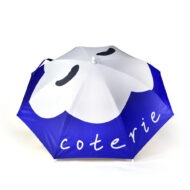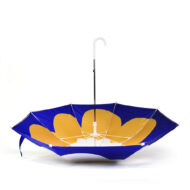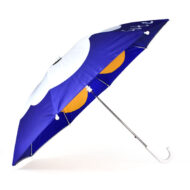Turn Your Customers into Heroes: A Guide to Telling A Brand Story
In a world saturated with marketing messages, how do you cut through the noise and forge a genuine connection with your audience? The answer lies in the power of brand storytelling. But not just any story – a story where your audience isn’t a passive observer, but the undeniable hero.

Photo: Unsplash Arif Ahmed
For too long, brands have positioned themselves as the protagonist, boasting about their features and achievements. While there’s a place for highlighting your value, true connection blossoms when you shift the focus. When you make your audience the hero, you tap into their aspirations, challenges, and desires, creating a narrative they can truly resonate with.
So, how do you transform your marketing from a self-congratulatory monologue into an empowering epic where your customers take centre stage? Here are key strategies to make your audience the hero of your brand story:
Understand Their Pursuit, Their Quest, Their Reason!
Every great hero has a quest. What are your audience’s goals, dreams, and pain points? What challenges are they facing? Deeply understanding their journey is the foundation of crafting a compelling narrative where they can see themselves. Conduct thorough research, listen to their feedback, and analyse their online behaviour. What keeps them up at night? What are they striving to achieve? Once you understand their “quest,” you can position your brand as the helpful guide or the valuable tool that aids them on their journey.
Position Your Brand as the Mentor or Tool
Your brand isn’t the hero; it’s the wise mentor, the reliable sidekick, or the indispensable tool that empowers the hero (your audience) to succeed. Think of Obi-Wan Kenobi guiding Luke Skywalker, or the trusty sword Excalibur aiding King Arthur. Your brand provides the knowledge, resources, or solutions that enable your audience to overcome their obstacles and achieve their goals. Instead of saying, “Our product has X feature,” try framing it as, “Empowering you to effortlessly manage your projects and reclaim your time.”
Focus on Their Transformation
The heart of any hero’s journey is transformation. How does your product or service help your audience evolve? What does their “before” and “after” look like? Focus your storytelling on the positive change your audience experiences as a result of engaging with your brand. Share stories of their successes, highlight how they’ve overcome challenges using your offerings, and celebrate their achievements. This makes your brand a catalyst for their growth, not just a product they consume.

Photo by: John Arano Unsplash
Invite Them into the Narrative
Don’t just tell stories about your audience; invite them to be part of the story. Encourage user-generated content, feature their testimonials, and create opportunities for them to share their experiences. Run contests, build communities, and actively engage with their contributions. When your audience feels seen and heard, they become invested in the brand narrative and feel like genuine protagonists.
Speak Your Audiences’ Language
Use the language, tone, and platforms that resonate with your audience. Understand their cultural nuances and preferences. Authenticity is key. Avoid jargon or overly corporate language. Speak to them like a fellow traveller on their quest, with empathy and understanding. Let them feel like you are their peer.
If colour and finish are part of your narrative toolkit, our Umbrella Colours and Designs: Trends and Psychology guide shows how palette choices shape perception and recall.
Show, Don’t Just Tell
Illustrate your audience’s heroic journey through compelling visuals, videos, and real-life examples. Show how your product or service has made a tangible difference in their lives. Authentic customer stories are far more powerful than any marketing slogan. Let their experiences speak for themselves.
Create Moments of Triumph
Design your customer experience to create “hero moments” – those instances where your audience feels empowered, successful, and valued. This could be a seamless purchase process, exceptional customer support that resolves a problem quickly, or a product feature that delivers a “aha!” moment. These small victories contribute to their overall heroic narrative with your brand.

Photo by: Rohan Makhecha Unsplash
Shifting your brand storytelling focus from yourself to your audience is not just a marketing tactic; it’s a fundamental shift in perspective. It’s about recognising that your success is intrinsically linked to the success of your customers. By understanding their quests, positioning your brand as their guide, highlighting their transformation, and inviting them into the narrative, you can craft a powerful and resonant brand story where your audience truly feels like the hero. And when your audience feels like the hero, they become your most loyal advocates, turning your brand story into a shared and enduring legend.
To activate this hero narrative across channels, see 8 promotional marketing ideas to boost exposure.
So, who is the hero of your brand story? It’s time to pass the cape and let your audience shine.
Brands who work on this and shifted the narrative are showing great success.
Here are some examples of brands that effectively make their audience the hero in their storytelling:
- Nike: Their “Just Do It” campaign often features everyday athletes overcoming personal challenges, positioning their audience as individuals striving for self-improvement and achievement. Nike provides the tools to help them on their heroic journey of athletic or personal betterment.
- Example: An advertisement showing a person pushing through exhaustion during a run, with the tagline “Just Do It,” empowers the viewer to see themselves as capable of overcoming their own obstacles.
- Dove: The “Real Beauty” campaign focuses on celebrating the natural beauty of all women, challenging unrealistic beauty standards. This makes their audience the heroes by validating their authentic selves and promoting self-acceptance.
- Example: Featuring diverse women of different shapes, sizes, and ages in their advertisements makes the audience feel seen and appreciated for who they are.

- GoPro: Their marketing often showcases the incredible adventures and achievements of their users, captured through GoPro cameras. This positions the audience as the adventurous heroes living exciting lives.
- Example: A compilation video of breath-taking footage captured by GoPro users – from skydiving to surfing – inspires viewers to envision their own heroic adventures.
- Airbnb: Their “Belong Anywhere” campaign highlights the experiences of travellers and hosts, focusing on the human connection and unique stories that arise from using their platform. The audience members are portrayed as explorers and individuals creating meaningful travel experiences.
- Example: Featuring stories of hosts going the extra mile for their guests or travellers discovering hidden gems in new cities makes the audience the central characters in the travel narrative.
- Manchester City Football Club: Their content often focuses on the personal journeys and triumphs of individual players, highlighting their dedication and connection with the fans. This allows the audience to see the players as relatable heroes.
- Example: A feature on a young player who overcame adversity to achieve their dream of playing for the club positions them as a hero whose journey the fans can admire and connect with.
These brands succeed by shifting the narrative away from solely promoting their products or services and instead focusing on the aspirations, challenges, and triumphs of their audience, effectively making them the heroes of their brand storytelling.
5 Steps To Take To Position Your Audience As The Centre Of Your Story
There are clear steps you can take to shift the position of your marketing.
- Ask Yourself Questions And Do The Research To Understand Your Audience
- Conduct thorough research: Go beyond basic demographics. Understand their psychographics, motivations, pain points, aspirations, and what truly matters to them. Use surveys, interviews, social listening, and analyse customer feedback.
- Create buyer personas or avatars: Develop detailed profiles of your ideal customers, focusing on their goals and challenges. This will help you empathise with their “hero’s journey.”
- Shift Your Messaging Focus
- From “we” to “you”: Reframe your marketing language to centre on the customer. Instead of saying “Our product has X feature,” say “You can achieve Y with our product.”
- Highlight benefits over features: Focus on how your product or service helps your audience achieve their goals or solve their problems. Emphasise the outcomes for them.
- Use “you” language: Consistently use pronouns like “you,” “your,” and “yours” in your content and communication.
- Tell Stories About Your Audience
- Feature customer success stories: Showcase how your product or service has helped real customers overcome challenges and achieve their objectives. Let their experiences be the central narrative of your brand storytelling.
- User-generated content (UGC): Encourage customers to share their experiences and feature their content on your channels. This makes them active participants in your brand storytelling.
- Highlight their achievements: Celebrate your audience’s wins, even if they’re indirectly related to your product. Show that you value their progress.
- Position Your Brand as the Guide/Tool
- Be the enabler: Frame your brand as the resource, tool, or mentor that empowers your audience to succeed in their own story.
- Provide value beyond your product: Offer helpful content, resources, and support that aids them on their journey, even if they haven’t purchased from you yet.
- Create Opportunities for Interaction
- Engage actively: Respond to comments, messages, and feedback. Show that you’re listening and value their input.
- Build community: Foster spaces (online or offline) where your audience can connect with each other and share their experiences.
- Run contests and challenges: Design activities that allow your audience to showcase their skills and achievements.
- Visual Storytelling with the Audience in Mind:
- Feature your audience: Use images and videos that depict your customers in aspirational or relatable scenarios, highlighting their successes or journeys.
- Make them the subject: Ensure your visuals focus on the people benefiting from your brand, rather than just the product itself.
By consistently implementing these strategies, a brand can gradually shift its narrative to place its audience at the heart of the story, making them the heroes. This fosters stronger connections, builds loyalty, and ultimately makes your brand more relatable and impactful.
Find out more about how we can help tell your story and put your audience at the centre of your campaign. +44 (0)1225 667979.
Our expertise lies in premium branded merchandise. We work with brands to help them with their audience telling their story through lively umbrellas, premium merchandise.



